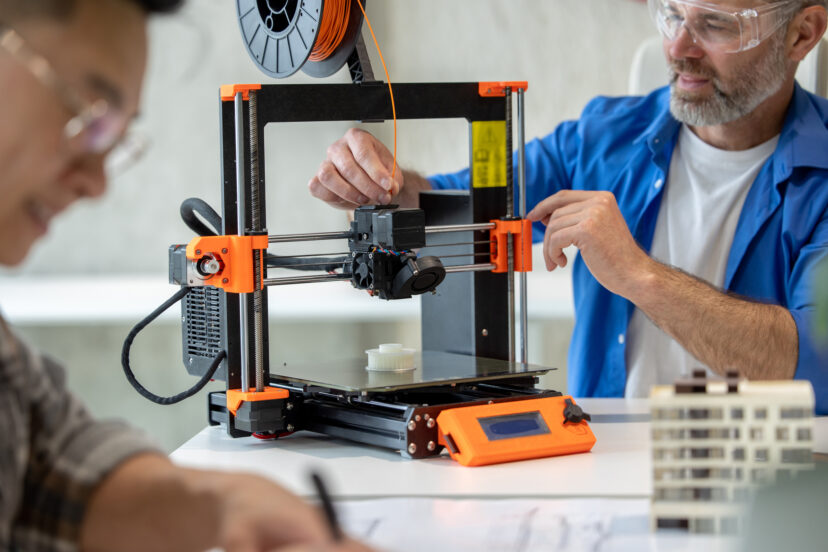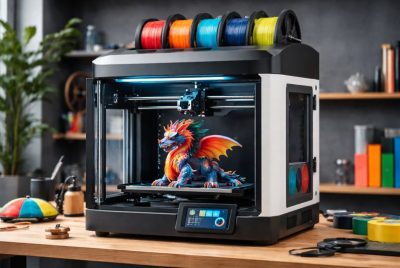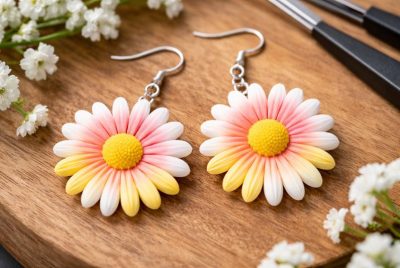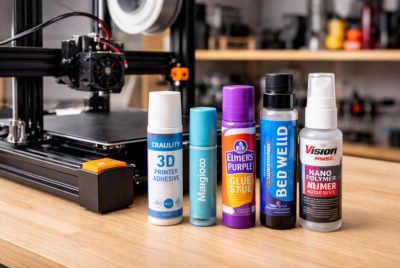3D Printer Belt Adjustment Tool: A Handy Guide for Smooth Printing
3D printing is the playground for hobbyists who want to create cool stuff and for professionals who are serious about their business. Making sure the 3D printer prints look crisp and clean is on top of the priority list, right? What if, you did your best to maintain your 3D printer but still, one of your projects didn’t come out the way you wanted it to be? Well, the reason behind that lies in the printer’s belt. Have you been paying attention to it? If not, then it’s time to get the mighty 3D printer belt adjustment tool and keep your machine in perfect condition.
What Is a 3D Printer Belt Adjustment Tool?
Haven’t heard of it yet? That’s fine! A 3D printer belt adjustment tool is responsible for moving the print head smoothly and accurately. Having the right amount of tension is crucial to ensure higher precision. If it’s too loose, your prints will look wobbly and if it’s too tight, you risk overworking your printer’s motor. Or worst-case scenario, snapping the belt itself (which we don’t like to happen). So, to make sure everything works smoothly, use the belt adjustment tool. It makes sure everything’s balanced (just the right amount of tension) so you’ll get more accurate, good results.
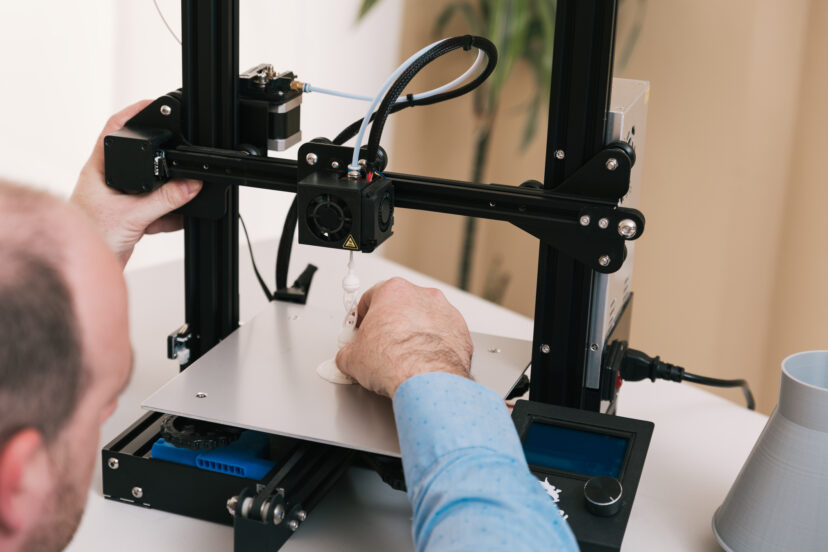
Why Do You Need to Adjust the Belts on Your 3D Printer?
Alright, so here’s the thing… the belts guide the X and Y axes of your printer with precision. Imagine if that guide goes off, the whole process falls apart leaving you with wobbly prints or worse, a complete print failure. Nobody likes that, right? That’s why you need to make sure the tension is just right by adjusting the belts on your 3D printer. Plus, you lower the chances of replacing parts sooner than you’d like.
Consistent belt tension in 3D printing is crucial to maintaining high-quality prints. Ensuring the print bed and extruder move smoothly prevents issues like layer shifting and ghosting. Proper adjustment techniques, as discussed in this guide on belt tensioning, can significantly improve print accuracy. Additionally, maintaining matching tension across belts, as highlighted in this article on belt consistency, ensures smooth movement and avoids common print defects.
How Often Should You Adjust Your Printer Belt?
A good rule of thumb is to check the belts every 20-30 prints. But if you notice some drop in print quality, check and adjust the belt right away! Keeping your printer well-maintained will save you time and effort, trust me. It will help your prints be as accurate as you imagined them to be. As for me, since I often use my 3D printer for some DIY projects, I make sure to add a quick belt check to my weekly routine. I just want to make sure my printer is tuned up. Oh, and I hate wobbly prints!
Signs Your 3D Printer Belt Needs Adjustment
Have you noticed that the layers on your print don’t quite stack upright? Chances are, the belt is too loose. How about more rough edges than expected? Wait, have you heard some grinding sounds while printing? If you tick all the boxes, then it’s time to grab a belt adjustment tool and check your printer’s belt. Just make sure it’s not too tight or loose for higher print quality.
How to Use a 3D Printer Belt Adjustment Tool
Using a belt adjustment tool is super easy you won’t break a sweat. First, switch off your machine (safety first!) then find your printer’s belt. They’re fairly easy to locate since they’re right on the X and Y axes. Next, slide the tool along the belt to check its tension. Is it too loose or too tight? Adjust the tension accordingly, it should move a little when pressed. Lastly, run a quick test print to make sure everything’s running smoothly.
Types of Belt Adjustment Tools
– Tension Gauges: These handy tools give you an exact measure of the belt tension. No guesswork involved.
– Manual Tensioners: Simple and straightforward, these let you adjust the tension by hand.
– Digital Tools: For those who love precision, digital tools provide tension readings right on a small screen.
Choosing the Right Belt Adjustment Tool for Your Printer
When it comes to choosing the perfect tool, you’ll want to keep a few things in mind:
– Compatibility: Make sure the tool works with your specific printer model.
– Ease of Use: If you’re new to the game, go for something simple that doesn’t require a manual the size of a textbook.
– Price: There’s a wide range of tools out there, from budget-friendly to high-end. Sometimes, a basic manual tool will do the trick just fine.
Top 3D Printer Belt Adjustment Tools You Need to Know
Belt Tension Gauge for 3D Printers
- A compact, easy-to-use gauge that measures belt tension precisely to ensure optimal printing quality.
- A handheld tool designed to manually tighten belts, ensuring that tension is neither too loose nor too tight.
- This digital device provides a precise measurement of belt tension with a digital readout for accuracy and ease of use.
- An adjustable pulley system that allows users to fine-tune the belt tension for both the X and Y axes of their 3D printer.
- A tensioner that uses springs to automatically maintain optimal tension, reducing the need for manual adjustments.
How Tight Should the Belt Be?
The printer belt should be tight, but not overly tight! Unless you’re ready to replace parts sooner, are you? I guess not. The belt should feel firm (but move a little when pressed) to ensure smooth and precise movement. Too loose can lead to poor print quality, layer shifting, or even slipping. Overtightening can damage the printer too. So, if you want to make sure it’s correct, gently pluck it and check if it vibrates slightly.
Common Mistakes When Adjusting 3D Printer Belts
– Over-Tightening: While it might seem like a tight belt is the solution, it can actually cause more harm than good.
– Ignoring Small Issues: Small shifts or wobbles in your print might not seem like a big deal, but they can become larger problems if left unchecked.
– Skipping Regular Checks: Consistency is key! Regular maintenance will save you from bigger headaches down the road.
The Impact of Belt Tension on Print Quality
Underestimating the importance of belt tension is like baking without measuring the ingredients. Just as too much flour can ruin your cake, poor belt tension can result in:
– Ghosting: An echo of previous layers appearing on the new ones.
– Wobbling: Uneven layers that make your object look unstable.
– Stringing: Stray filament between different parts of the print.
Conclusion
It’s easy to overlook the belt adjustment when you’re excited to print your project. Sure, it might seem like a small task but really, it has a huge impact on the print quality. Use the right belt adjustment tool and make sure it’s tight but not too tight. Add them to your weekly routine check too! Now that you’ve got the scoop on the 3D printer belt adjustment tool, it’s time to put that knowledge to work. Oh hey, if you’re interested in creating your own 3D printed sword, check our guide on 3D Printed Sword in Tinkercad for tips and inspiration.Happy printing!
FAQs About 3D Printer Belt Adjustment Tools
1. How tight should the 3D printer belt be?
The belt should be tight enough that when you press lightly, it should vibrate or move a little bit.
2. What happens if the 3D printer belt is too loose?
A loose belt can cause layer shifting, rough edges, and poor print quality, because the print head won’t move properly.
3. Can I use a regular tool to adjust my 3D printer belt?
You can, but a belt adjustment tool is made specifically for the job and makes it much easier to get it right.
4. How often should I adjust my 3D printer belt?
Check the belt tension every 20-30 prints or if you notice a drop in the print quality.
5. Can I print my own 3D printer belt adjustment tool?
Definitely! Lots of people have shared designs for belt adjustment tools you can print yourself.

